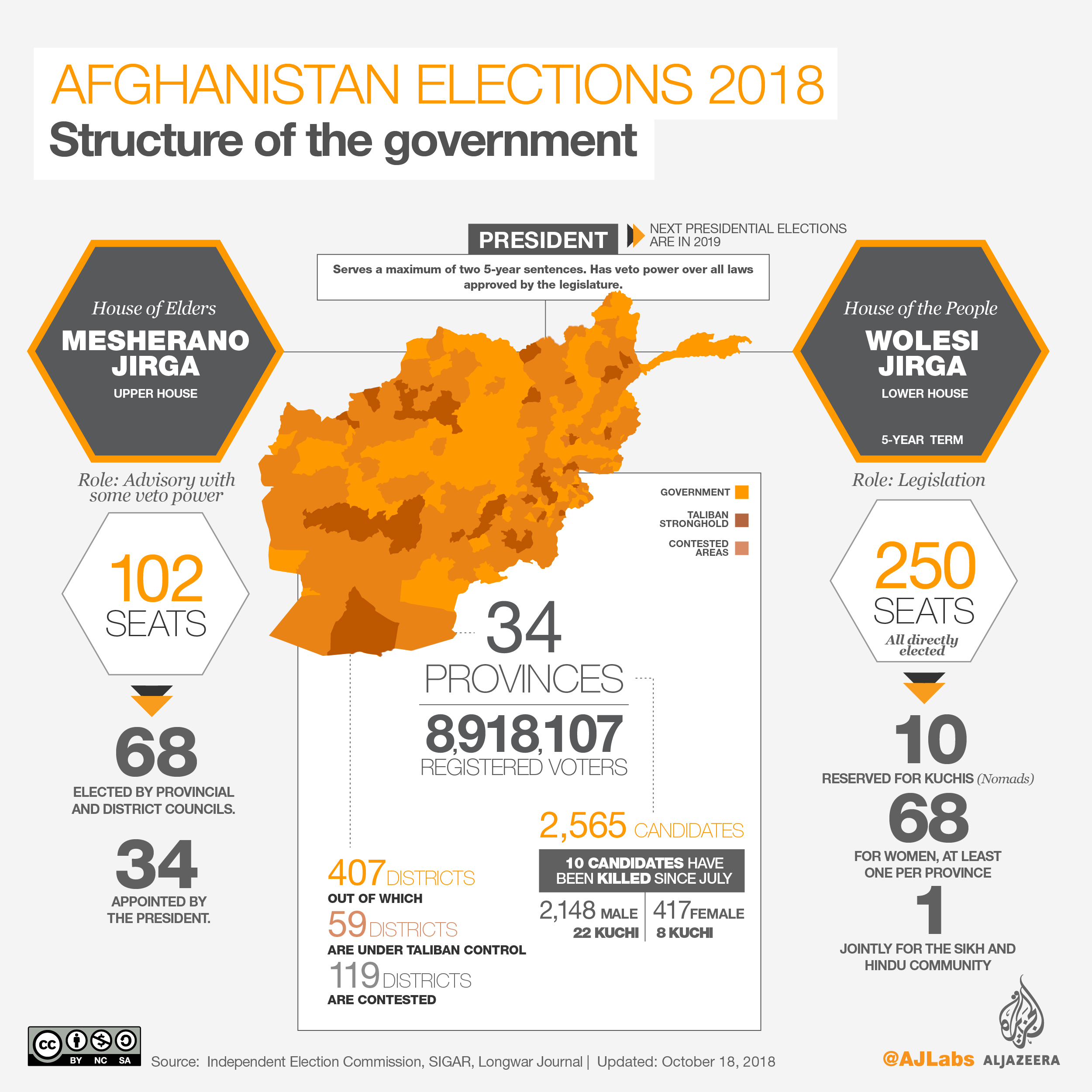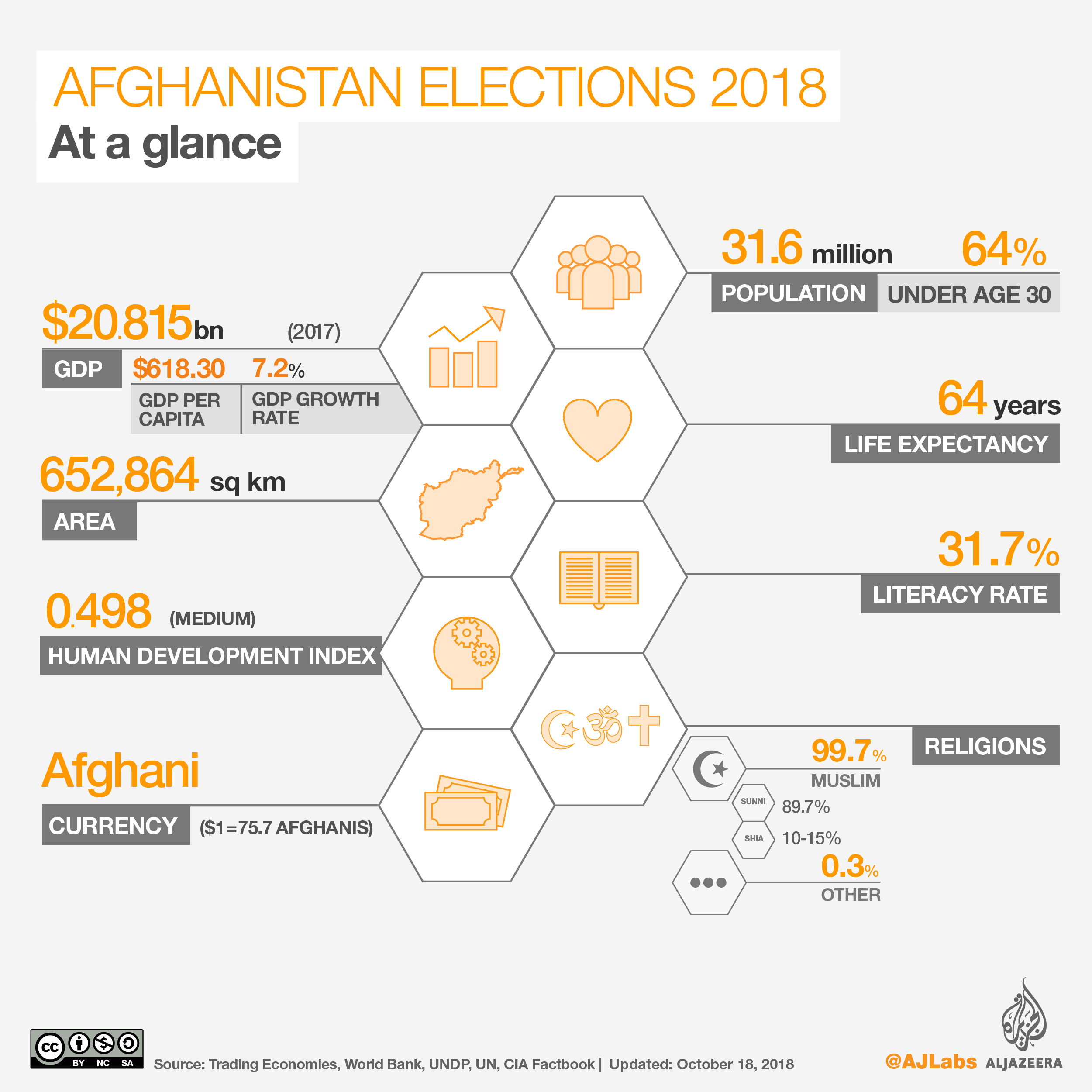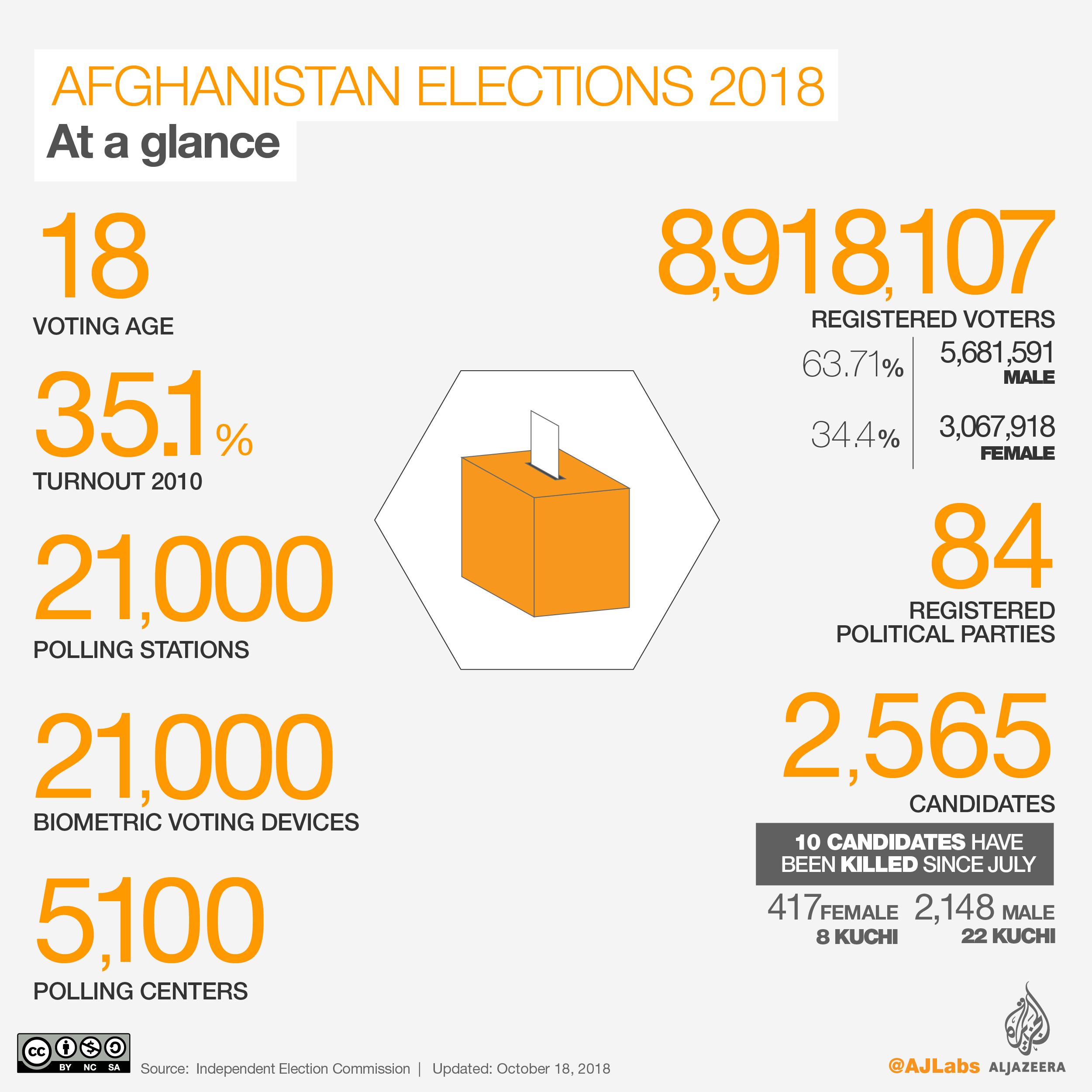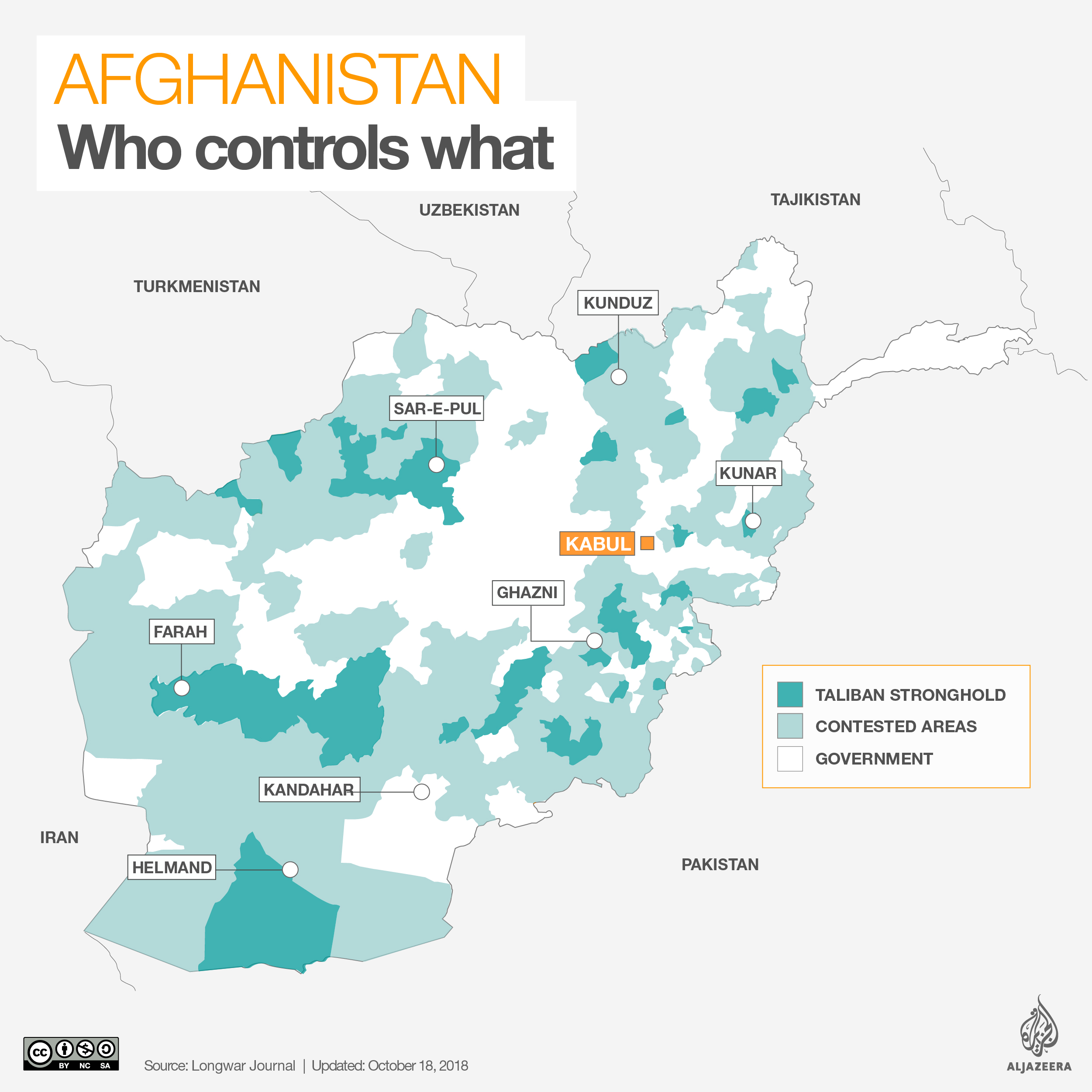All you need to know about Afghanistan’s parliamentary elections
Afghanistan is set to vote in long-delayed parliamentary elections for the third time since the fall of the Taliban in 2001.
The polls, which were originally scheduled for early 2015, were last pushed to October 20 due to security fears and reforms in the voter registration process.
The Afghan government has striven to assure people that it will be safe to vote, but in a country wracked by violence – largely attributable to attacks by the Taliban armed group – many are still wary.
The Taliban has vowed to disrupt the “bogus elections”.
“People who are trying to help in holding this process successfully by providing security should be targeted and no stone should be left unturned for the prevention and failure [of the elections],” Taliban spokesman Zabihullah Mujahid said in a statement last week.
Here is what you need to know about the upcoming elections:
When’s election day?
Saturday, October 20. Polls open at 7am (02:30 GMT) and close at 4pm (12:30 GMT).
There are 21,000 polling stations in 5,100 polling centres in the country’s 33 participating provinces.
 |
What are people voting for?
The Afghan parliament comprises the Mesherano Jirga (upper house) and the Wolesi Jirga (lower house).
Saturday’s vote will be for the Wolesi Jirga, whose elected parliamentarians serve five-year terms.
There are 250 seats in the Wolesi Jirga, including 10 seats that are reserved for Kuchis (nomads) and one jointly for the Sikh and Hindu communities. There must be 68 female representatives, with each province having at least one.
The Meshrano Jirga consists of parliamentarians chosen from local councils and those appointed by the president, as well as members elected in district elections.
 |
Who can vote?
All Afghan citizens who are 18 years of age or older with a valid voter identification card have the right to vote.
In order to get a valid card, Afghans registered themselves on a new biometric system that was put in place to prevent voter fraud.
All previously issued registration cards have been cancelled.
The Independent Election Commission (IEC) announced that 8,918,107 people have registered to vote in the elections, of which 3,067,918 are women and 5,681,592 are men.
The IEC said that more 600,000 registrations were cancelled as they were invalid for various reasons.
Who are the candidates?
According to the IEC, there are 2,565 candidates running in the Wolesi Jirga elections, 417 of whom are women.
A total of 205 – nearly eight percent – of candidates have registered as members of political parties. The rest are independent candidates.
According to an Afghan Analyst Network count, Vice President Abdul Rashid Dostum’s party, Jonbesh-e Melli-ye Islami, has the most candidates, with 44, including eight women.
It is followed by Gulbuddin Hekmatyar’s Hezb-i-Islami with 42, including two women; and Deputy Chief Executive Haji Muhammad Mohaqqeq’s party, Hezb-e Wahdat-e Islami-ye Mardom, with 22 candidates, including five women.
 |
Will the whole country vote at once?
Voting in the southern Afghan province of Kandahar will be delayed by one week following this week’s assassination of the powerful provincial police commander, General Abdul Raziq.
The election will also not take place in the eastern province of Ghazni due to two intertwined issues: firstly, the precarious security situation in the province because of a high level of Taliban activity and their complete control over some parts of it; and secondly, the ongoing dispute over how to divide Ghazni’s electoral constituencies to have a more balanced ethnic representation.
In the 2010 parliamentary elections, the Pashtuns and Tajiks of Ghazni were not able to cast ballots because voting could not be held in their Taliban-controlled areas. This resulted in the Hazaras, a minority community, winning all the seats in Ghazni, leaving the Pashtuns and Tajiks without representation.
Why is this election important?
The Afghan government aims to send a message to the Taliban with this election: that despite the ongoing violent campaigns by the armed group, the government is functioning and that the Taliban will have to come to the negotiating table through a political process acceptable to all Afghans.
 |
What are the challenges?
The Taliban, who have been fighting Afghan and US-led NATO forces for the past 17 years, have rejected the elections and warned candidates and Afghan security forces that they would be targeted, as would schools whose premises will be used as polling stations.
The IEC said in a statement on Wednesday that at least 10 candidates have been killed since July.
At least 2,000 polling stations that were threatened directly by the Taliban will remain closed.
Local media reported that some 70,000 soldiers will be deployed across Afghanistan to provide security.
Meanwhile, the IEC has taken measures to avoid possible vote-rigging in a country with a history of voter fraud.
A few weeks ahead of the election, the government introduced a biometric system which records each voter’s photo and fingerprints in order to register.
Following the polls, this information will be sent to the IEC’s main data centre where it will be checked for repeat votes.
The election will be observed by more than 400,000 civil society activists, local election watchdog institutions and representatives from media outlets.
When will the results be announced?
Ballot counting will begin upon the conclusion of voting at 4pm Kabul time in the presence of election observers.
The IEC has not set a timeline for announcing official results, but preliminary results are expected within a month.
 |




